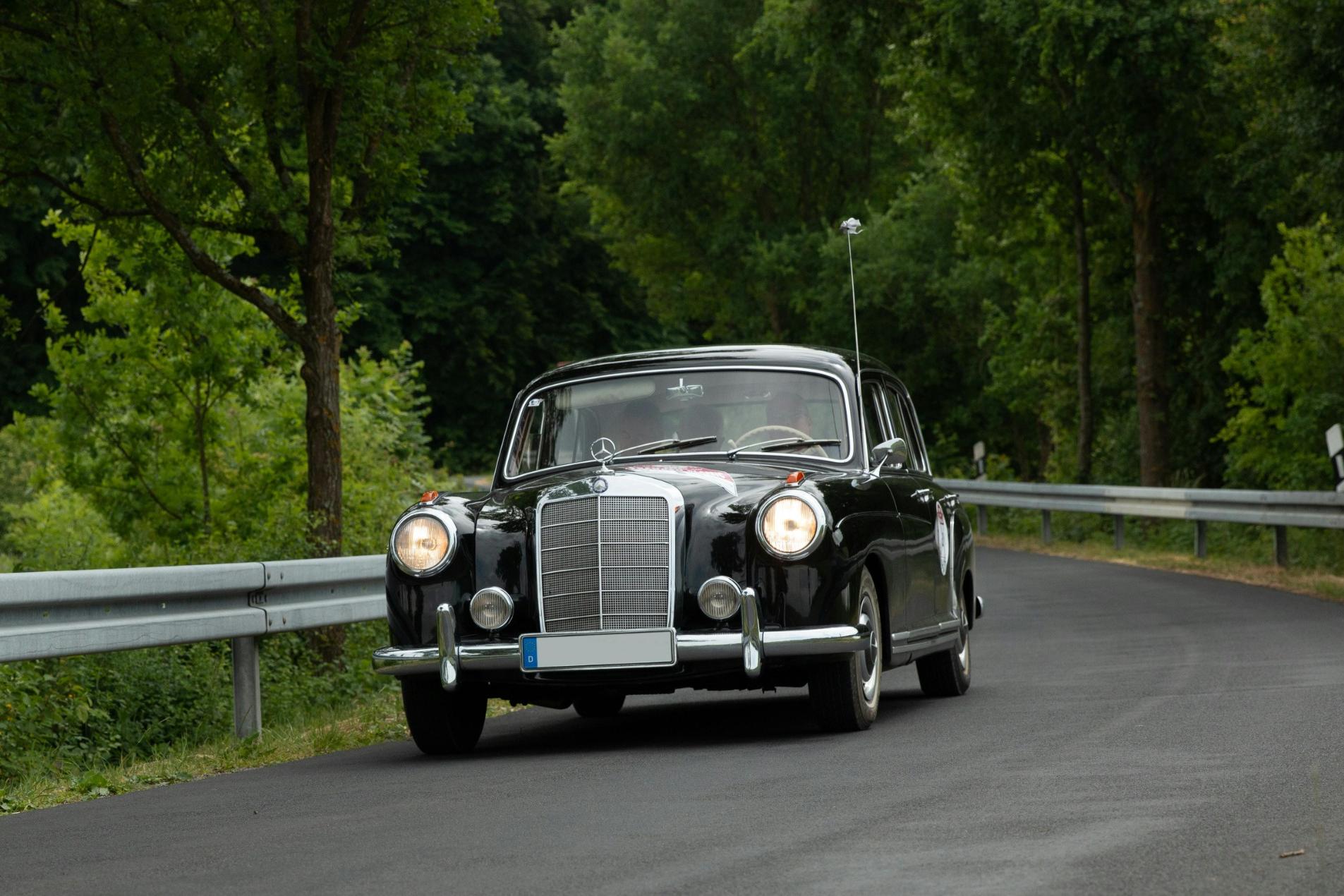The W120 and W121 models of Mercedes-Benz, which were produced from the mid-1950s to the early 1960s, are a significant part of the brand's heritage. These models are often referred to as "Ponton" Mercedes, but why is this the case? In this blog post, we'll explore the history behind the Ponton name, its connection to the W120 and W121 models, and why these cars remain iconic among classic car enthusiasts today.
What Does "Ponton" Mean?
The term "Ponton" is a French word that means "pontoon" or "float." It was used to describe the streamlined, slab-sided body style of these Mercedes models. Unlike earlier Mercedes cars, which had more angular designs, the W120 and W121 featured smooth, flowing lines that resembled a pontoon boat's sleek form. The name was coined because of these soft, rounded contours, which were a departure from the sharp edges that defined earlier automotive designs.
The W120 and W121: The Birth of the Ponton
The Mercedes W120 (also known as the 180) and the W121 (known as the 190) were groundbreaking models for the brand. The W120 was introduced in 1953, and the W121 followed shortly after in 1956. These cars were notable for their innovative construction and modern design, which set them apart from their contemporaries.
Before the Ponton models, Mercedes cars had more traditional, boxy bodies, and their design had not yet evolved to the smooth, aerodynamic shapes seen in later models. The W120 and W121's unique silhouette was a response to changing consumer expectations for a more modern and aesthetically pleasing design. The new shape also provided better aerodynamics, improving the overall performance of the car, which was an essential consideration during the post-war era.
Why Were the W120 and W121 So Important?
The Ponton series represented a turning point for Mercedes-Benz. They were the first models to fully embrace modern styling principles, and they played a pivotal role in establishing the brand’s reputation for luxury, innovation, and quality. The cars were equipped with advanced features for their time, including independent suspension, which greatly improved ride comfort and handling.
Moreover, the W120 and W121 were also some of the first Mercedes-Benz models to gain widespread commercial success. Their reliability and performance made them popular in both the personal and professional sectors, and they became the standard for German engineering during the 1950s and early 1960s. The W121, in particular, gained a reputation for its ruggedness and durability, making it a popular choice among taxi fleets in several European cities.
The Legacy of the Ponton
Today, the W120 and W121 models are cherished by classic car collectors and Mercedes-Benz enthusiasts. Their unique design and historical significance make them a sought-after addition to any collection. The Ponton models are not only a reminder of Mercedes-Benz's engineering prowess but also a symbol of a new era of automotive design.
If you're a classic car enthusiast or looking to restore a vintage Mercedes, the W120 and W121 Pontons are timeless choices. At ClassicMercedesParts.co.uk, we offer a wide range of parts for these legendary models. Whether you're in need of restoration parts, accessories, or maintenance components, our store has everything you need to keep your Ponton running smoothly.
Conclusion
The W120 and W121 Mercedes models, known as the Pontons, are a prime example of the innovative spirit that has long defined Mercedes-Benz. Their distinctive design, built to be aerodynamic and luxurious, set the stage for the evolution of the brand's vehicles. Whether you’re a collector or a fan of classic cars, understanding the history and significance of the Ponton is essential to appreciating its lasting impact on automotive design.
For the best selection of parts for your classic Mercedes, be sure to visit ClassicMercedesParts.co.uk, where we offer everything you need to preserve the legacy of these remarkable vehicles.

